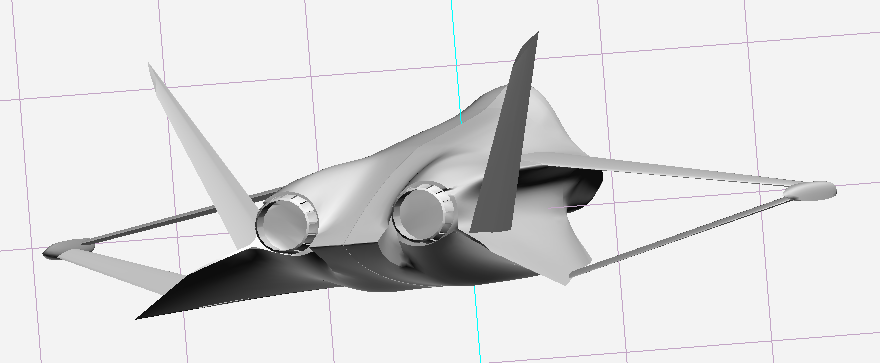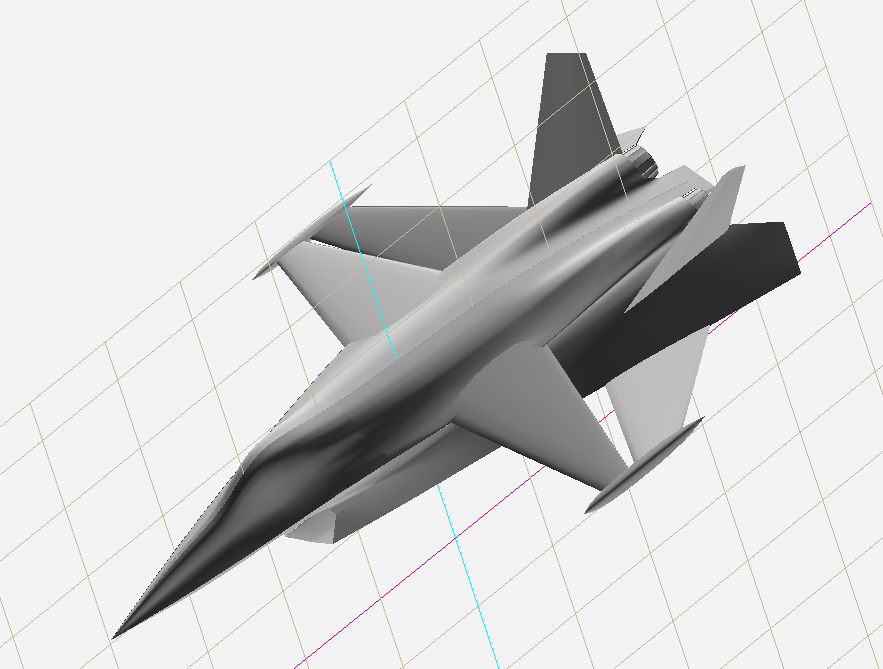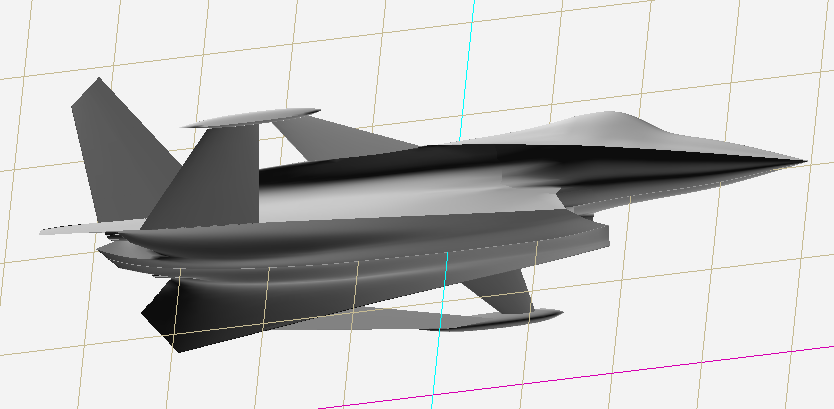Now it's starting to look good. Maybe angle the sides of the engine tunnel to decrease side RCS, flatten the bottom of the tunnel and the nose, to help add lift. The engine nozzles, consider replacing them with 2D vectoring nozzles.
Typhoon actually uses a bent anhedral wing like the J-10 (and so different from the Lavi, or any Russian fighter). It does not angle downward, but angles first then bends, a concept that was also tested on the X-31. If the wing tip is higher than the wing root its dihedral, if lower than anhedral. Dihedral improves stability on the roll axis, but anhedral has the opposite effect and increase rate of roll. That's why the latter is preferred nowadays.
For carrier use, low speed handling is important. Usually you can improve on that by lessening the sweep of the wing and increasing the wingspan. One way is by a wing that is shaped more like a diamond. The other is a double delta (like the J-7E, Draken or Su-15). However, if your wing area is big enough, and your wing loading is low enough, you can also keep the straight delta.
Planeman,
Don't you think the jointed wing designs do not allow for all moving tailplanes? I see that as a disadvantage.
Of the UAV, you must be talking about the Anjian concept. Admittedly it looks cool.
I've seen another Chinese concept where a canard is set behind a straked possibly DSI intake. I think that allows for vortice generation independent of the canard angle.
Typhoon actually uses a bent anhedral wing like the J-10 (and so different from the Lavi, or any Russian fighter). It does not angle downward, but angles first then bends, a concept that was also tested on the X-31. If the wing tip is higher than the wing root its dihedral, if lower than anhedral. Dihedral improves stability on the roll axis, but anhedral has the opposite effect and increase rate of roll. That's why the latter is preferred nowadays.
For carrier use, low speed handling is important. Usually you can improve on that by lessening the sweep of the wing and increasing the wingspan. One way is by a wing that is shaped more like a diamond. The other is a double delta (like the J-7E, Draken or Su-15). However, if your wing area is big enough, and your wing loading is low enough, you can also keep the straight delta.
Planeman,
Don't you think the jointed wing designs do not allow for all moving tailplanes? I see that as a disadvantage.
Of the UAV, you must be talking about the Anjian concept. Admittedly it looks cool.
I've seen another Chinese concept where a canard is set behind a straked possibly DSI intake. I think that allows for vortice generation independent of the canard angle.







